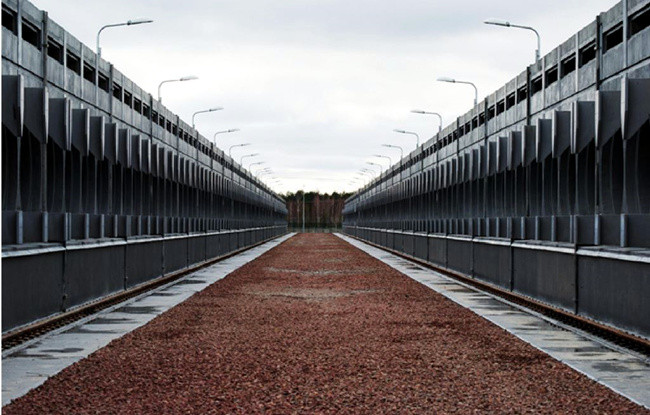The pledging event co-chaired by Ukraine and Japan as President of the G7 raised approximately €90 million for the completion of the Interim Storage Facility 2 (ISF-2). Of the total amount, €45 million will be provided by the G7 and the European Commission, while another €40 million will be granted by the EBRD subject to the approval by its Governors in early May.
The Government of Ukraine announced further contributions, and other donors also made new pledges. Funding of the ISF-2 is provided through the Nuclear Safety Account and the total cost of the project is €400 million.
Once operational, the plant will process, dry and cut more than 21,000 fuel assemblies from Chernobyl units 1-3, which will then be placed in double walled canisters and stored in concrete modules on site. The spent fuel will then be stored safely and securely or a minimum period of a hundred years. The ISF-2 will not be used for storing spent nuclear fuel from other nuclear power plants in Ukraine or elsewhere.
Construction works of the facility – designed and built by the US company Holtec – are scheduled to be concluded by the end of 2016. After the plant has received approval by the Ukrainian regulator full processing and storage can commence in the following year. It will be the world’s largest dry spent fuel storage facility.
The Nuclear Safety Account was established at the EBRD in 1993 as the Bank’s first fund to address nuclear safety issues related to Soviet-type reactors. Today, the Bank is managing seven such funds, among them the Chernobyl Shelter Fund through which the international community finances the New Safe Confinement.
EBRD President Sir Suma Chakrabarti said: “30 years after the Chernobyl accident it is of the utmost importance to bring the joint efforts by Ukraine and the international community to transform the site into an environmentally safe state to a successful conclusion. The storage facility is an essential part of our work in Chernobyl and today’s pledging event has provided financial means to achieve it. We are grateful to the international community for its determined and continuing support.”
Ambassador of Japan to Ukraine, Mr. Shigeki Sumi, said as the G7 Presidency: “The Chernobyl disaster enabled the world to acknowledge the importance of nuclear safety. On behalf of the G7 members, I would like to commend the progress made under the Chernobyl projects during the past 30 years. I would also like to renew the G7’s commitment in the endeavour to convert the Chernobyl site into a stable and environmentally safe condition, and request the international community to continue supporting Ukraine in this endeavour.”
The accident in Chernobyl on 26 April 1986 destroyed unit 4 of the nuclear power plant. The New Safe Confinement is currently under construction and will eventually seal the reactor from the environment to prevent the release of contaminated material and protect the existing shelter from external impacts such as extreme weather. The giant structure is nearing completion and commissioning is expected by late 2017.
The EBRD Nuclear Safety Account was established in 1993 for safety and decommissioning projects. The following contributors are members: Belgium, Canada, Denmark, European Community, Finland, France, Germany, Italy, Japan, the Netherlands, Norway, Russia, Sweden, Switzerland, the United Kingdom, Ukraine and the United States. Azerbaijan has made a donation to the work of the fund.



